Eight Tips for Managing Excavator Owning and Operating Costs

As a business owner, there are always factors that are out of your hands. However, effectively managing the things that you CAN control will save you time and money, and will have a positive impact on your bottom line. Here are eight considerations that can help you manage your overall operating costs, sharpen your bids and improve the profitability of your business.
- Regular Maintenance. The number one thing that can be done to retain value and extend the life of your excavator is to perform basic maintenance as recommended by the operators manual. Make sure that you’re checking your filters, sampling the oil, greasing the attachments, checking fuel quality—these simple maintenance procedures will keep your costs down and prevent any premature failures.
- Cooling System. Heavy equipment is typically utilized in environments with a high level of dust and debris. It is essential to make sure that your radiator and cooling systems are cleaned out regularly, otherwise you run the risk of overheating the engine and causing other problems. We’ve designed our excavators with tilt-out coolers to make it easy for operators and technicians to access in order to blow them out.
- Undercarriage. Something as simple as making sure the undercarriage is kept clean can prevent costly wear and tear, and prolong the life of a machine. It’s also important to check for wear on your pins and along the track regularly. Look for scouring along the hydraulic cylinders, idler and sprockets—any kind of debris in there can speed things up along those wear points and lead to costly downtime. It’s also important to make sure that the track tension is set properly—having it too loose or too tight can cause unnecessary wear on those components.
- Buckets and other Attachments. If you’re working with a worn-down attachment, it’s going to make your excavator work harder—burning more fuel, and taking more time and wages to perform the job at hand. That’s why it’s important to keep an eye on the teeth, wear plates and other crucial points on your attachments. A worn bucket or a poorly maintained breaker attachment can tear up an excavator arm and cause lots of unnecessary wear on the machine, so always take the time to make sure that your attachments are properly maintained.
- Fuel Quality. Fuel quality is extremely important with the engine systems that we’re using in today’s machines. Most manufacturers are using a high-pressure common rail (HPCR) system now on their engines, and any kind of debris that is going to filter through that fuel system will damage those injectors to the smallest micron readings. Any kind of contamination can cause unnecessary wear on the system, so it is more critical than ever to make sure that you are getting your fuel from a reputable service provider. Keep an eye on fueling procedures to make sure there aren’t opportunities for dust and debris to contaminate the fuel, DEF and other fluids.
- Operating Modes. Most manufacturers offer multiple operating modes on their excavators, so it’s important for operators to take advantage of these options. To help owners and operators manage fuel consumption, CASE excavators feature three operating modes with varying RPMs and fuel efficiency. Our excavators also include an auto-idle feature that kicks in after three seconds of inactivity, and an auto-shutdown feature that shuts the machine down after three minutes to help further reduce fuel consumption.
- Telematics and Machine Control. One of the best ways to improve production and machine utilization, simplify maintenance procedures and protect your equipment investment is through the utilization of telematics and machine control. Telematics systems can give you unprecedented data on how your machines are being utilized in the field—idle time, operating practices, total utilization, etc.Machine control improves productivity and reduces the amount of re-work on a job site. Over time, intelligent equipment utilization through machine control can reduce the wear and tear on your machine components and ground-engaging tools, lower maintenance costs and fuel consumption, and extend the life of your machine – all while drastically improving productivity.
- Remanufactured Parts. Remanufactured parts are available now more than ever, and are a great option to consider for owners who want to keep their costs down. In order to better serve the needs of their customers, many OEMs now keep thousands of remanufactured parts and components in stock, ready to ship. Ordering readily available remanufactured parts and components and having them installed immediately is a much more timely approach than having to wait for a part to be repaired. In addition to that, the cost of remanufactured parts can often be up to 40 percent less than a new part with no drop-off in quality compared to new components.












